Recruitment Marketing Automation vs. The Tech Talent Shortage
A closer look at why Recruitment Marketing Automation might be the answer to the tech industry’s recruiting woes.

Adrian Cernat
Founder and CEO
The strategy for addressing the talent shortage in tech that we
gestured to in the introduction is not groundbreaking by any means.
In fact, it already has a name (recruitment marketing automation),
and it’s gained some adoption by major players in the industry. But
before we get into the particulars of EVP-definition and show you
some practical examples of this strategy at work, let’s take a closer
look at the why RMA might be the answer to the tech industry’s
recruiting woes.
These days, tech companies resort to all kinds of stunts, publicity
moves, and shenanigans to try and differentiate themselves from
their competitors to hire top candidates. This comes in the form of
anything from massive policy announcements to large sponsored
events to crazy signing bonuses for new hires. We’re not saying that
these techniques can’t be effective, but from our perspective they
seem like shortcuts. Not all shortcuts are bad—some of them save time
and energy in a way that boosts ROI—but these kinds of shortcuts
seem to skip all of the important stuff, e.g. laying the groundwork for
future recruitment success. After all, once the barbecue is over and
the swag has been handed out, how many of the attendees are
you ever going to hear from again? Perhaps more importantly, how
many are ever going to hear from you again?
It’s easy to see why people take this approach: recruiting in tech is
hard, and there simply aren’t enough qualified candidates to go around. But shortcuts aren’t the answer. The answer to create longterm, sustainable recruitment strategies that will strengthen your talent pipeline and continually engage passive job seekers.
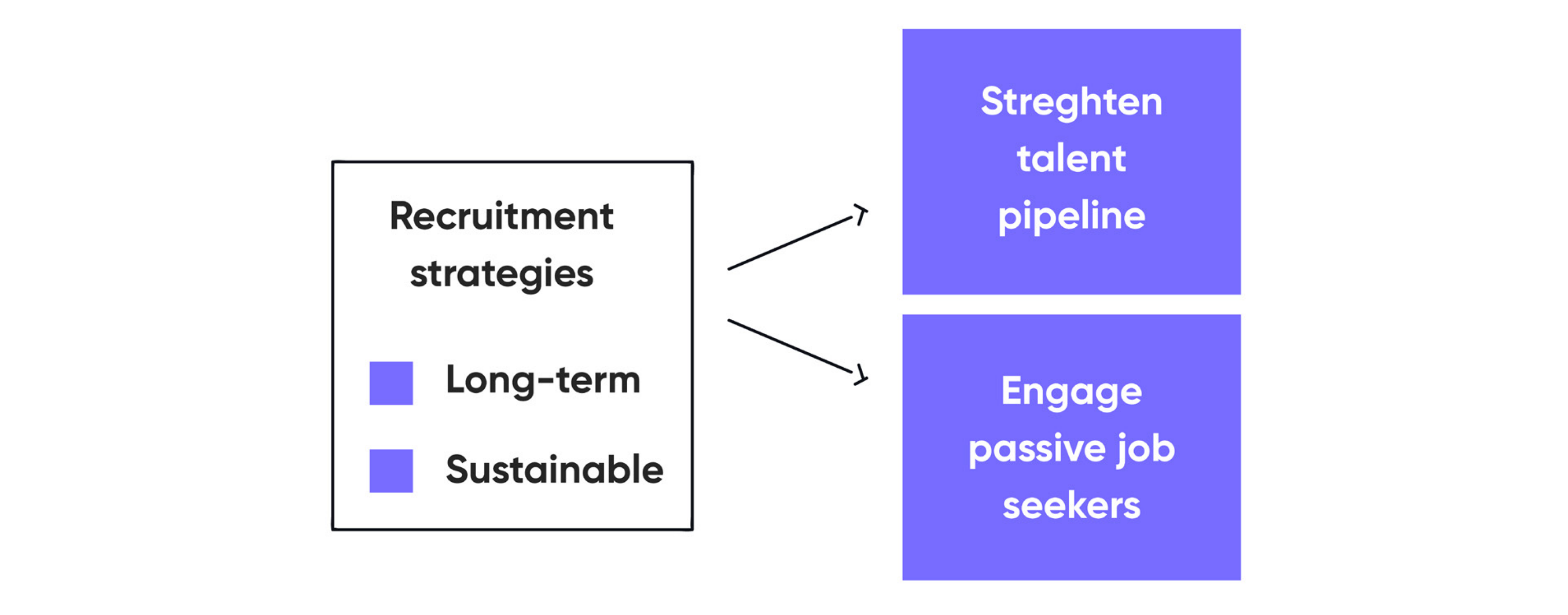
This can involve big, in-person events, sure, but it’s mostly a matter of
posting online content to social media sites and other niche channels
on a consistent, repeatable basis. In other words, it’s about recruitment
marketing.
THE SKILLS GAP MYTH
At this point some of you might be wondering about the purported
skills gap in tech hiring, i.e. the idea that not only are there not
enough skilled workers to go around, but that this paucity of qualified
candidates is exacerbated by rapidly changing requirements. How
can you identify, target, and engage a specific demographic of
users if you’re working on cutting-edge stuff that even experienced
developers won’t be able to help you with? It’s a reasonable question,
but it’s also one that applies in fewer cases than you’d think. A recent
Indeed study found that, actually, the skills that businesses are looking
for in the tech industry are changing a little bit less quickly than they are in other industries. This means that, by and large, workers with the
skills you need are out there, and they can be reached.
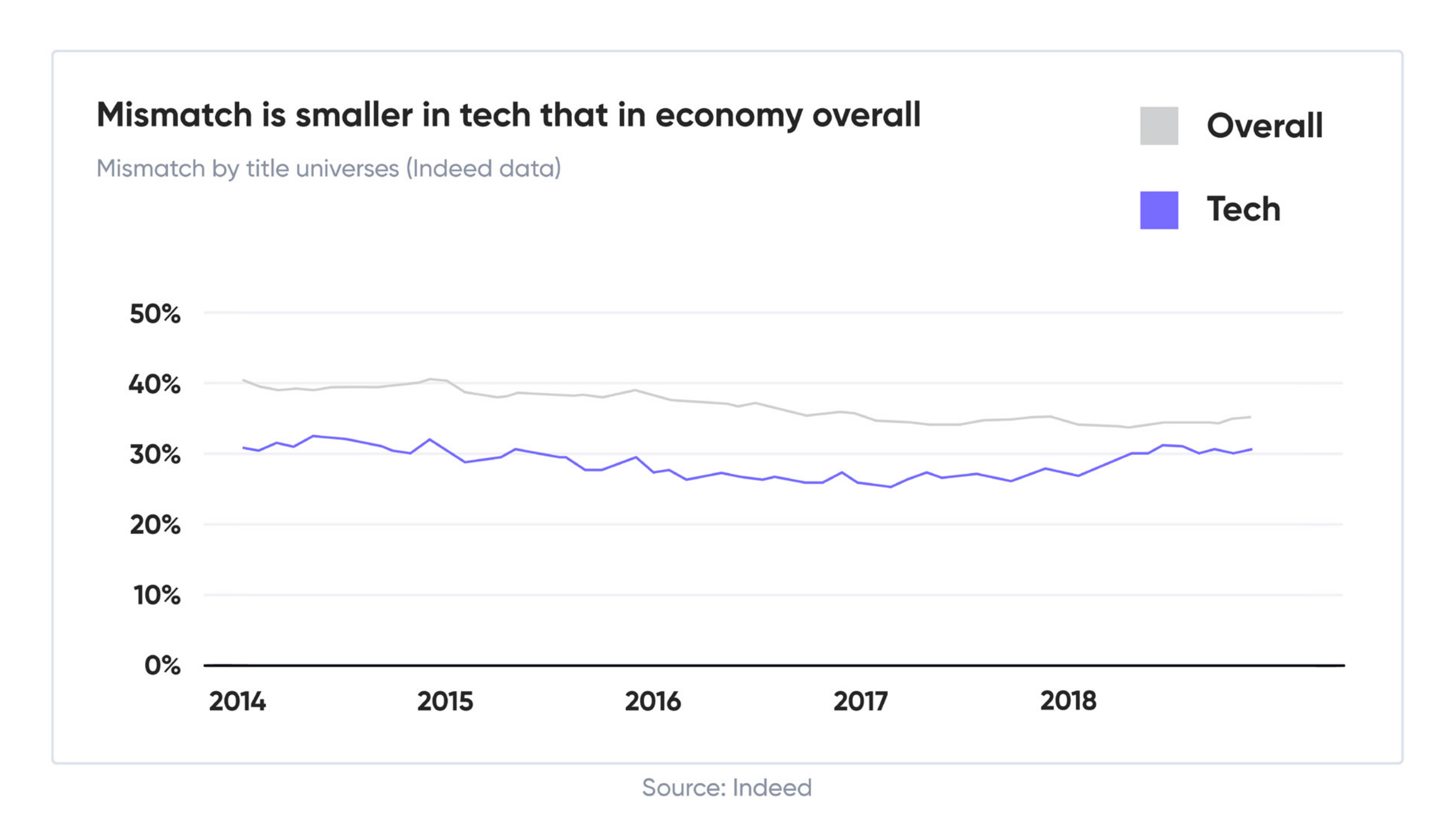
From a recruitment marketing perspective, this means that you’re
not looking for a mythical unicorn who may or may not exist. Rather,
you’re competing fiercely for talent that we know is out there. The
company that competes most effectively will come away with the
best team.
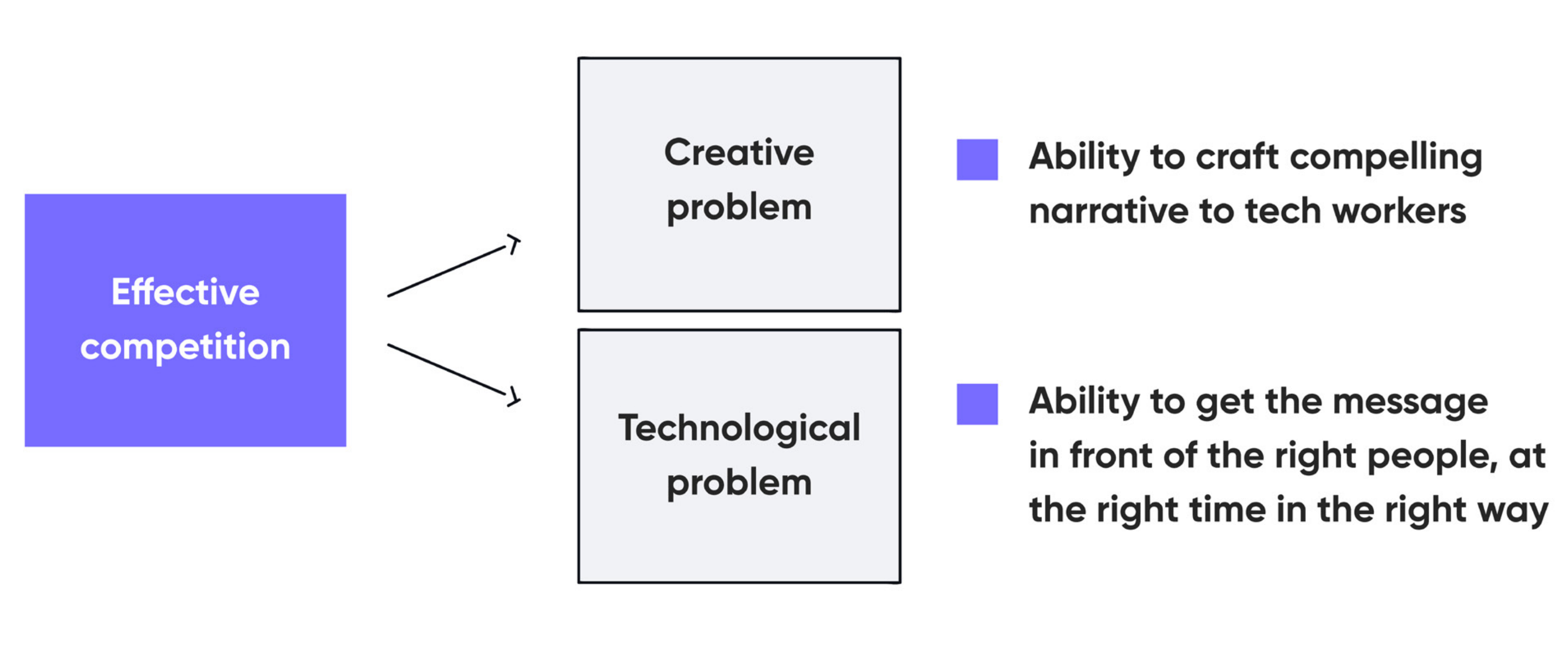
What does effective competition look like? At its heart, it’s about two
things: the ability to craft a narrative that’s compelling to technically skilled workers, i.e. one that will let them know who you are, why you
do what you do, and what’s in it for them if they join up; and the
ability to get that message in front of the right people at the right
time in the right way. The first is a creative problem; the second is a
technological problem.
REDEFINING YOUR EMPLOYER BRAND
So, let’s start with the creative problem. Your ideal candidate is
out there, and realistically they're already employed with another
company. How do you tell her what she wants to hear without
making any promises you can’t keep? The first task is to gain a better
understanding of your ideal candidate’s needs and wants. In tech,
this often comes down to things like flexibility, exciting technical
challenges, and, yes, compensation. Start by taking stock of all the
ways your company currently provides value (i.e. your employee
value proposition, or EVP), and identifying both the things that would
be most enticing to your target personas and the gaps that might
cause them to think twice about applying.
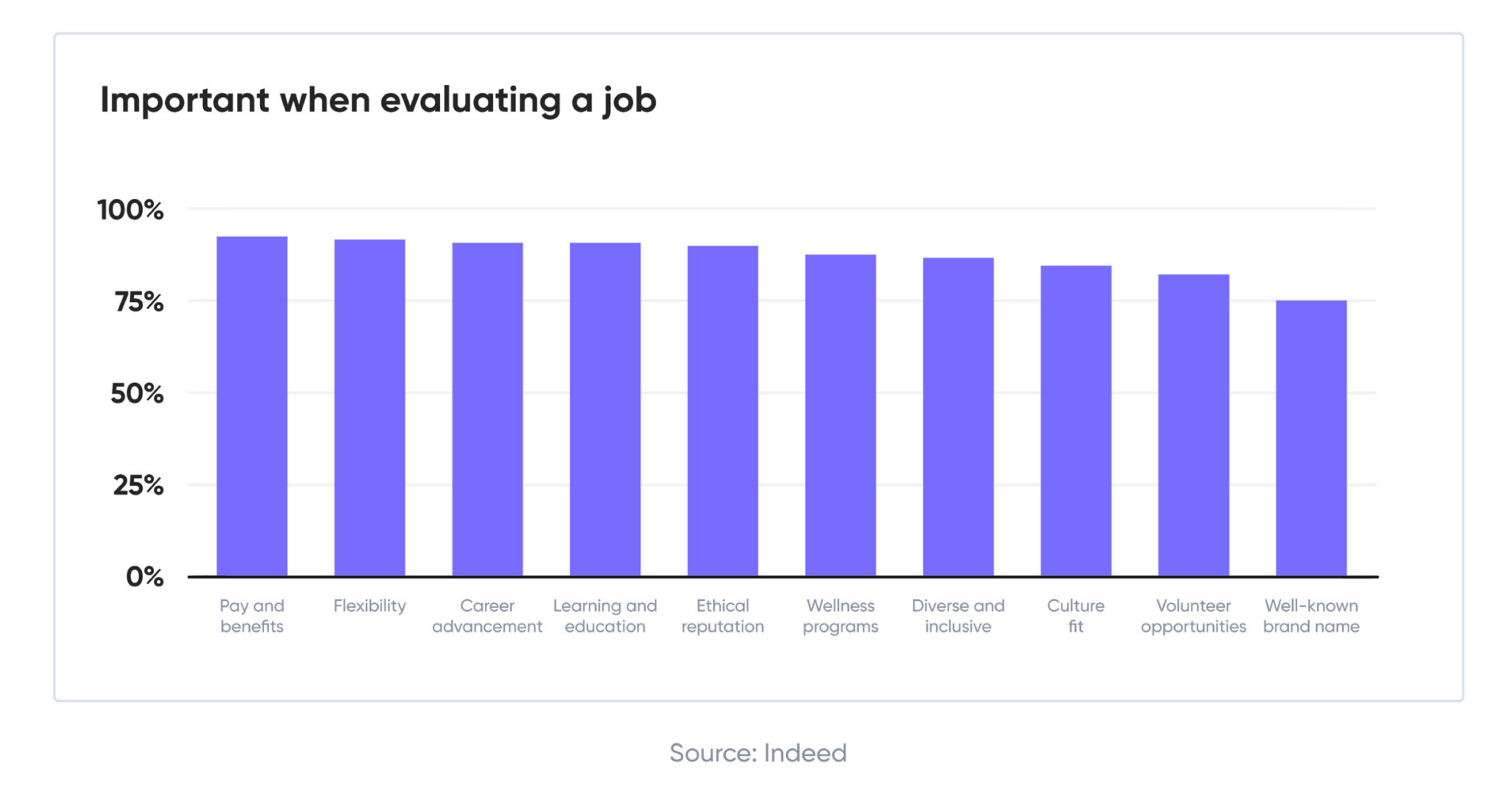
Once you’ve gotten a handle on your EVP, your employer brand
messaging might center around the way that that EVP plays out
for your existing employees. Consider creating (short) employee
testimonial videos for YouTube and Snapchat that feature your
team describing the ways that you’ve helped them achieve their
goals. Conversely, you might leverage ads on niche sites like Reddit
and Stack Exchange with visual collateral that shows your team
collaborating, socializing, or problem-solving. Since your target
personas already have jobs, you have to convince them in a concrete
way that your company offers a better opportunity, whether that’s
because of salary and perks, lifestyle benefits, company culture, or
anything else that you do particularly well. Because tech workers
can be extremely picky about where they apply, your employer
brand isn’t going to be perfect overnight.
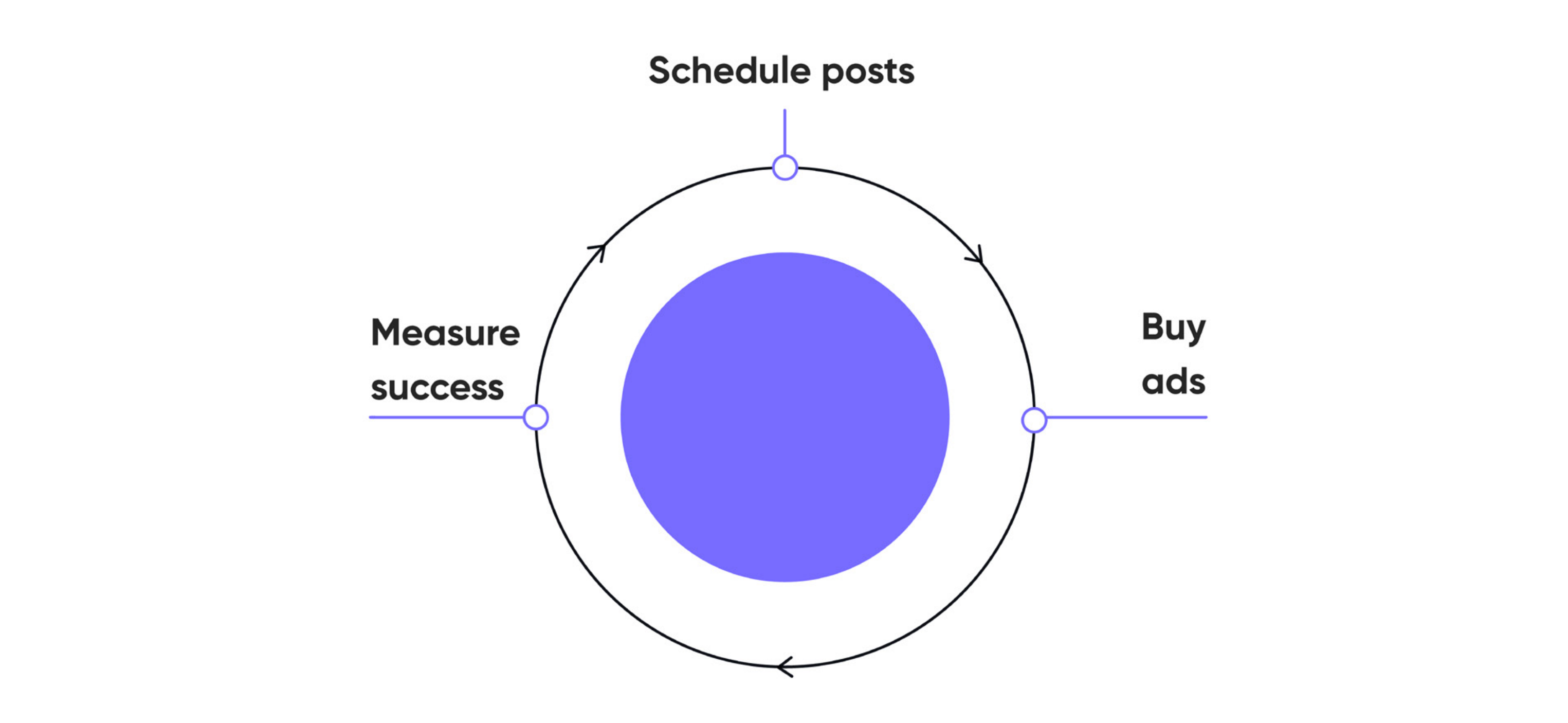
Schedule posts, buy ads, and measure your success. Over time,
you’ll get better at understanding the kinds of messages that highly-skilled candidates in your precise field respond to.
THE IMPORTANCE OF CANDIDATE EXPERIENCE
Okay, that covers the creative challenge—what about the technical
challenge? When it comes to making sure that the right people are
receiving the message at the right time in the right way, it helps to be
able to do two things: schedule posts in advance across a number
of different channels, and provide a talent pipeline and application
flow that's streamlined, mobile-friendly, and easy to use.
For the first item, the reasoning should be fairly obvious. If you’re
going to hire a large volume of people, you need to make sure you’re
constantly communicating with those people. This may require some
level of automation.
For the second, you may need to rethink things like your online
application. If it’s long, cumbersome, and mobile un-friendly now,
it’s time to do something about it. Providing a good applicant
experience is always important, but it’s especially crucial when
candidates essentially have their pick of jobs.
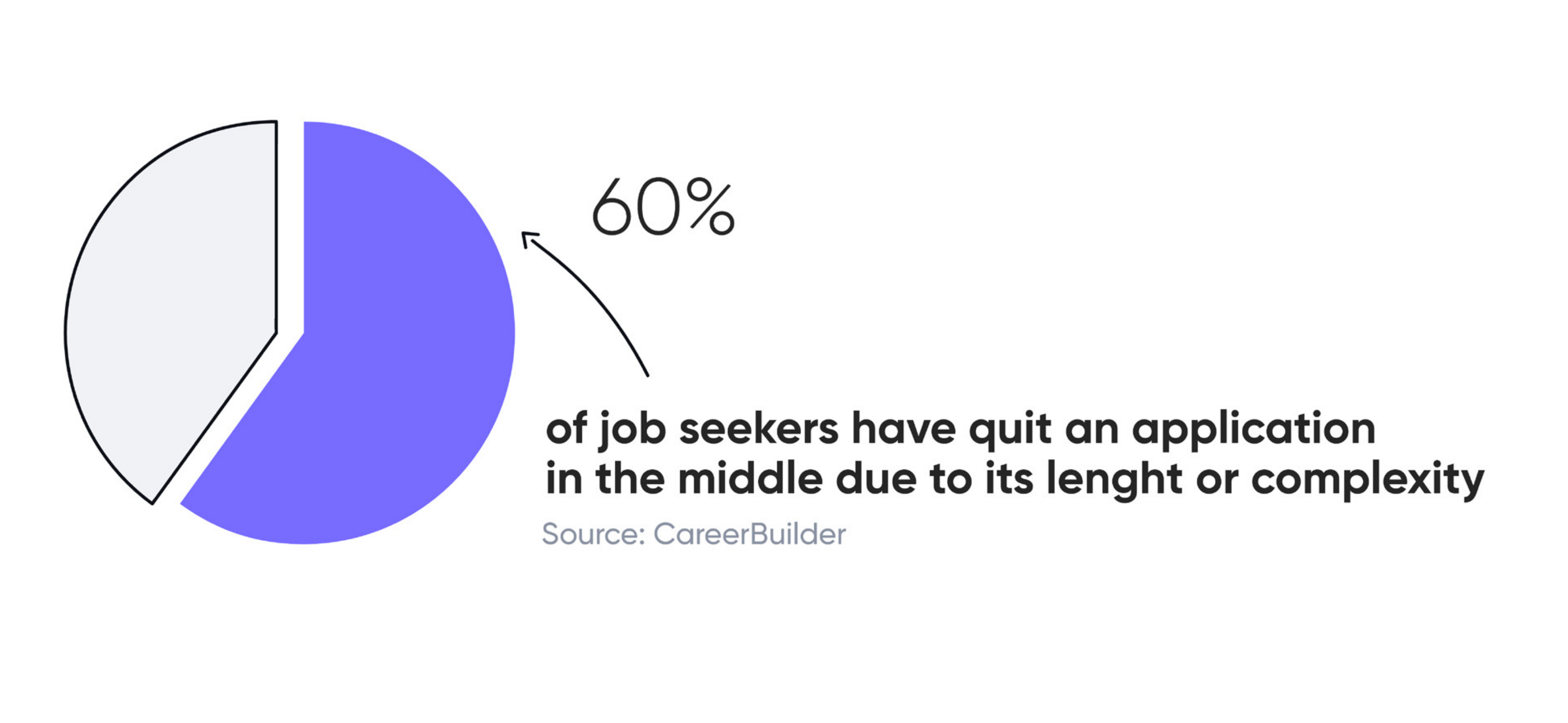
Think of everything from the landing page that welcomes applicants
after they click on an ad to the email you send them after a submitted
application as a chance to impress your applicants. If you can offer
top-notch applicant experience in this field, you can convince picky
candidates both that you value their time and that you’re adaptable
in your processes. Offer anything else, and your best candidates will
stick with the jobs they already have.